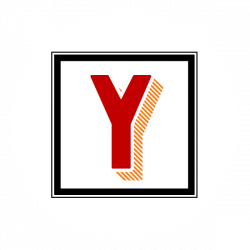Die Notwendigkeit, physische und virtuelle IT-Komponenten systematisch in einer Art Configuration Management Database zu erfassen, hat durch die Entwicklung von Cloud-Services, Software as a Service, etc. weiter zugenommen. Ein Aufsatz von Corcho et al – s. u. – greift dieses Thema auf und entwickelt eine Ontologie für dieses Thema.

Die Aufgabe besteht darin, diesen Ansatz durch Anwendung auf einen konkreten Fall zu validieren. Bei kleineren Szenarien, wie etwa der für die LV IT-Service-Management erdachten WAM-GmbH, eignet sich dieses Thema für eine Bachelorarbeit. Wenn dieses Thema mit einem Unternehmen und einem echten Anwendungsfall kombiniert wird, ist es auch als Masterprojekt bzw. Masterarbeit geeignet.
Voraussetzung für die Bearbeitung dieses Themas ist unter anderem die Arbeit mit dem Ontologie-Editor Protégé. Wenn das Thema als Masterprojekt bzw. Masterarbeit bearbeitet werden soll, so kommt die Arbeit mit Apache Jena dazu.
Es besteht die Möglichkeit, mit den Autoren des Artikels in Madrid zusammenzuarbeiten. In diesem Falle wäre ggf. sinnvoll, auf Englisch zu schreiben.
@InProceedings{10.1007/978-3-030-88361-4_26,
author=”Corcho, Oscar
and Chaves-Fraga, David
and Toledo, Jhon
and Arenas-Guerrero, Juli{\’a}n
and Badenes-Olmedo, Carlos
and Wang, Mingxue
and Peng, Hu
and Burrett, Nicholas
and Mora, Jos{\’e}
and Zhang, Puchao”,
editor=”Hotho, Andreas
and Blomqvist, Eva
and Dietze, Stefan
and Fokoue, Achille
and Ding, Ying
and Barnaghi, Payam
and Haller, Armin
and Dragoni, Mauro
and Alani, Harith”,
title=”A High-Level Ontology Network for ICT Infrastructures”,
booktitle=”The Semantic Web — ISWC 2021″,
year=”2021″,
publisher=”Springer International Publishing”,
address=”Cham”,
pages=”446–462″,
abstract=”The ICT infrastructures of medium and large organisations that offer ICT services (infrastructure, platforms, software, applications, etc.) are becoming increasingly complex. Nowadays, these environments combine all sorts of hardware (e.g., CPUs, GPUs, storage elements, network equipment) and software (e.g., virtual machines, servers, microservices, services, products, AI models). Tracking, understanding and acting upon all the data produced in the context of such environments is hence challenging. Configuration management databases have been so far widely used to store and provide access to relevant information and views on these components and on their relationships. However, different databases are organised according to different schemas. Despite existing efforts in standardising the main entities relevant for configuration management, there is not yet a core set of ontologies that describes these environments homogeneously, and which can be easily extended when new types of items appear. This paper presents an ontology network created with the purpose of serving as an initial step towards an homogeneous representation of this domain, and which has been already used to produce a knowledge graph for a large ICT company.”,
isbn=”978-3-030-88361-4″
}

